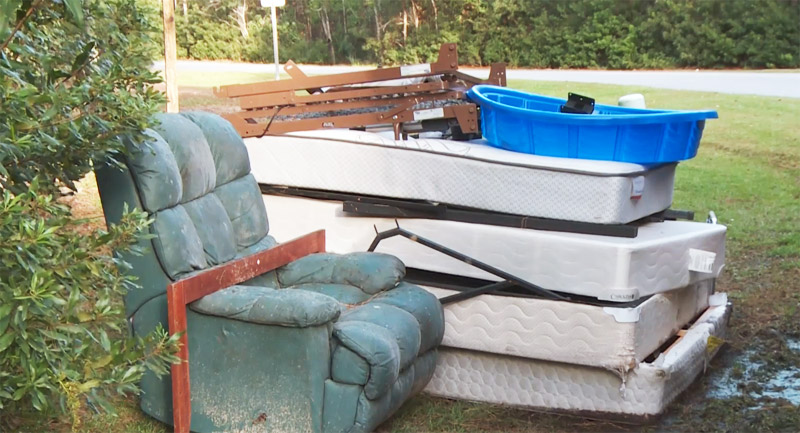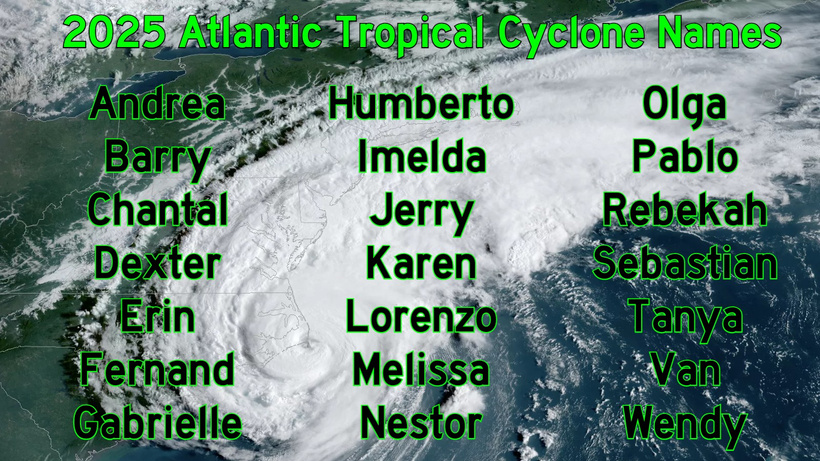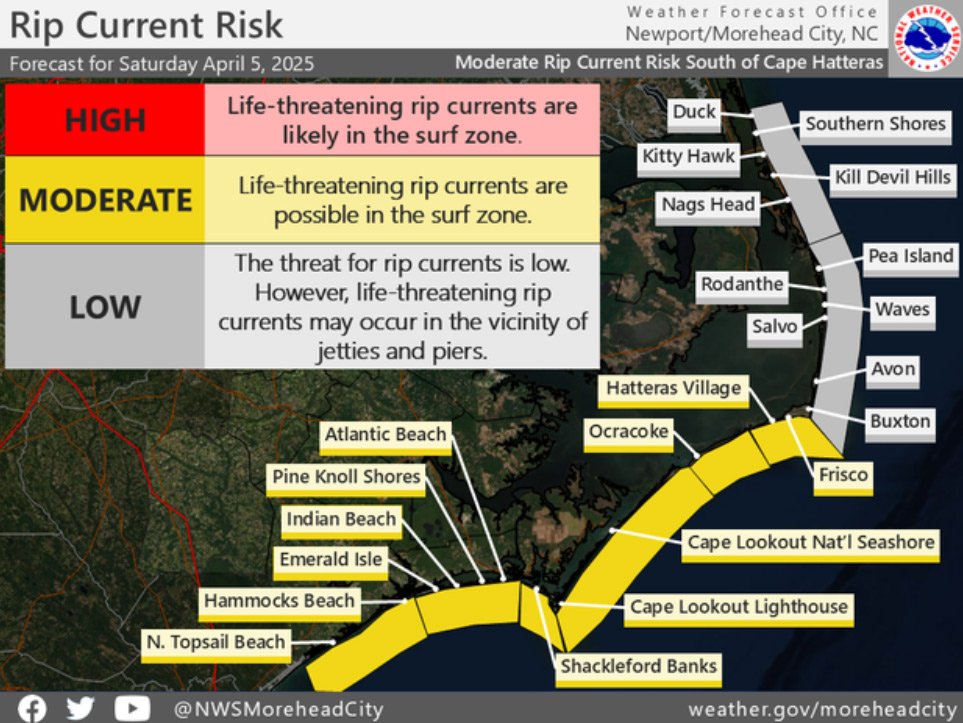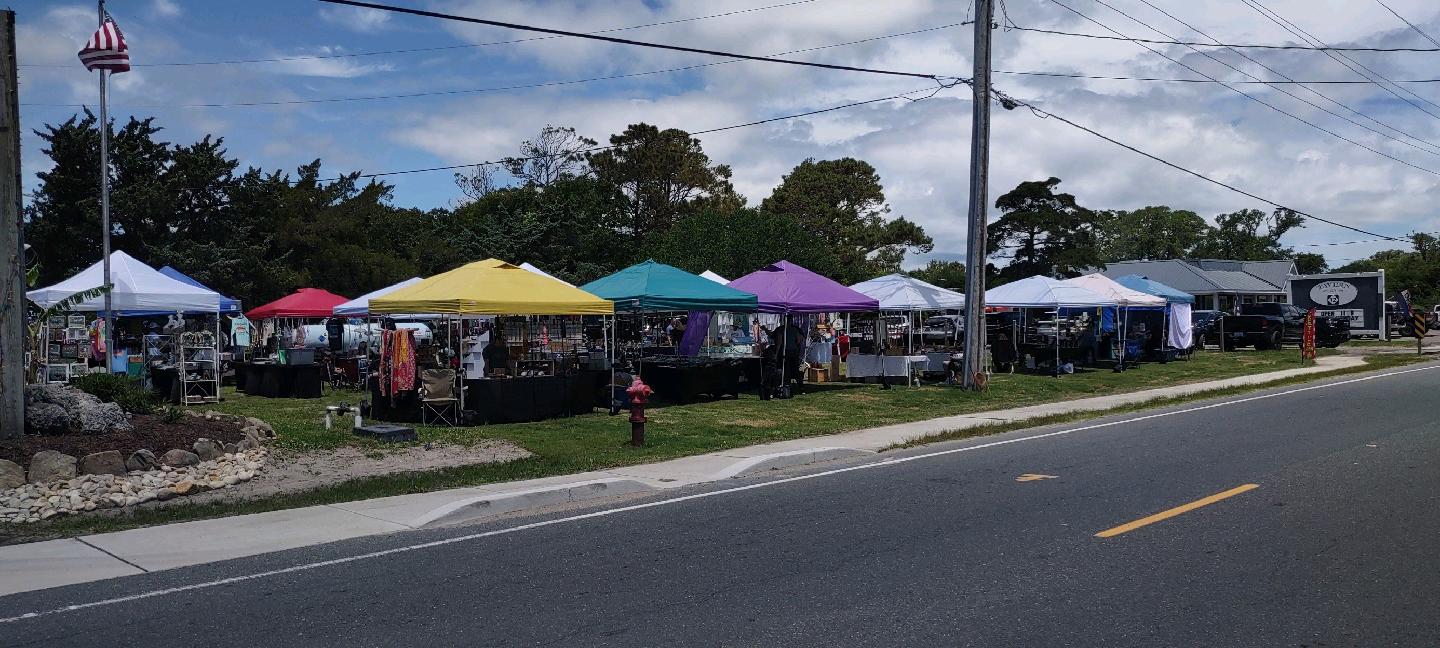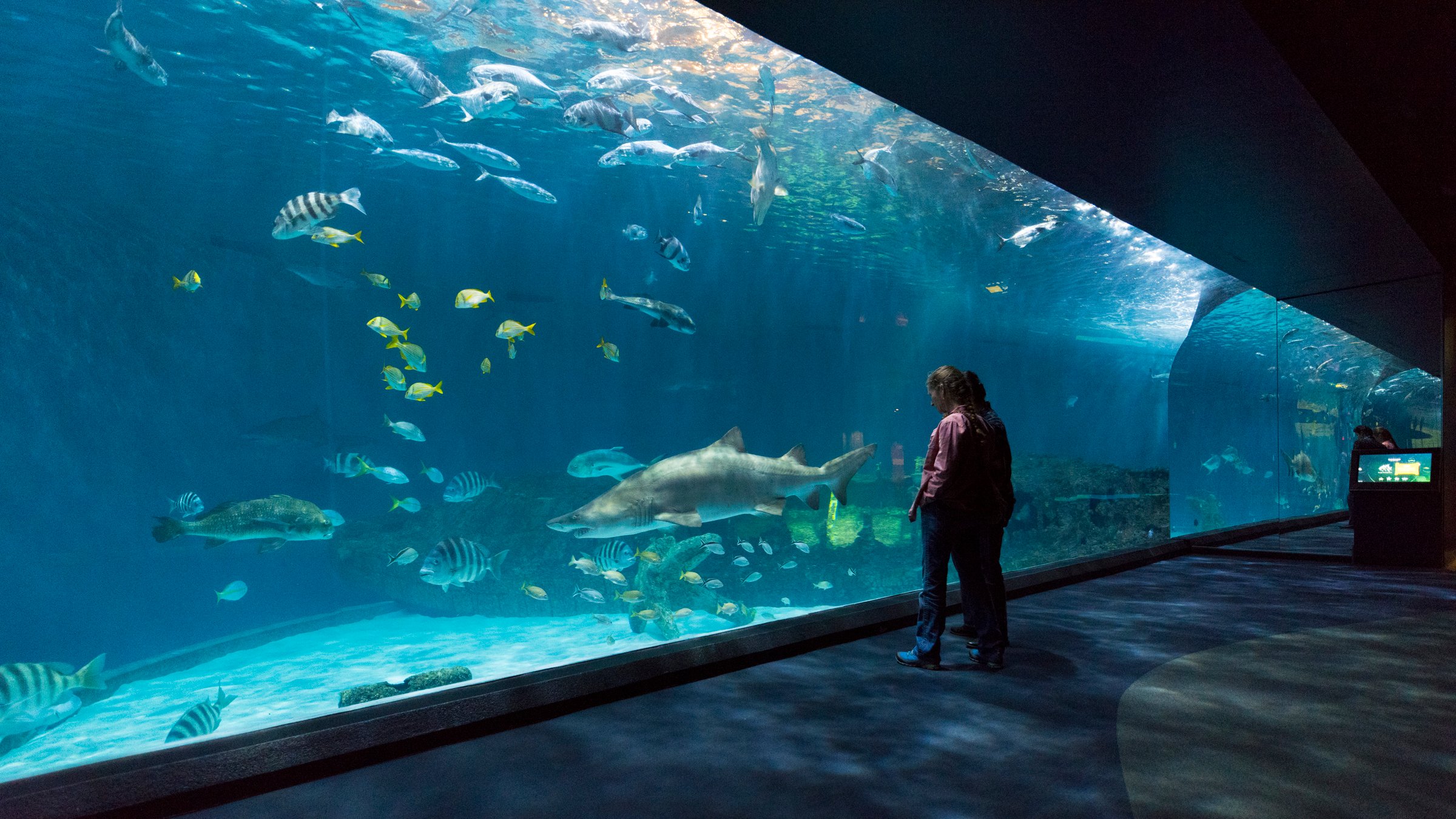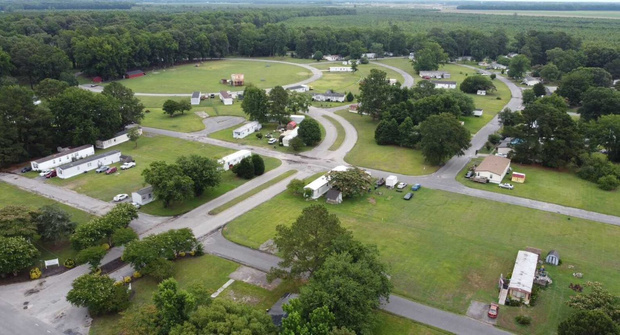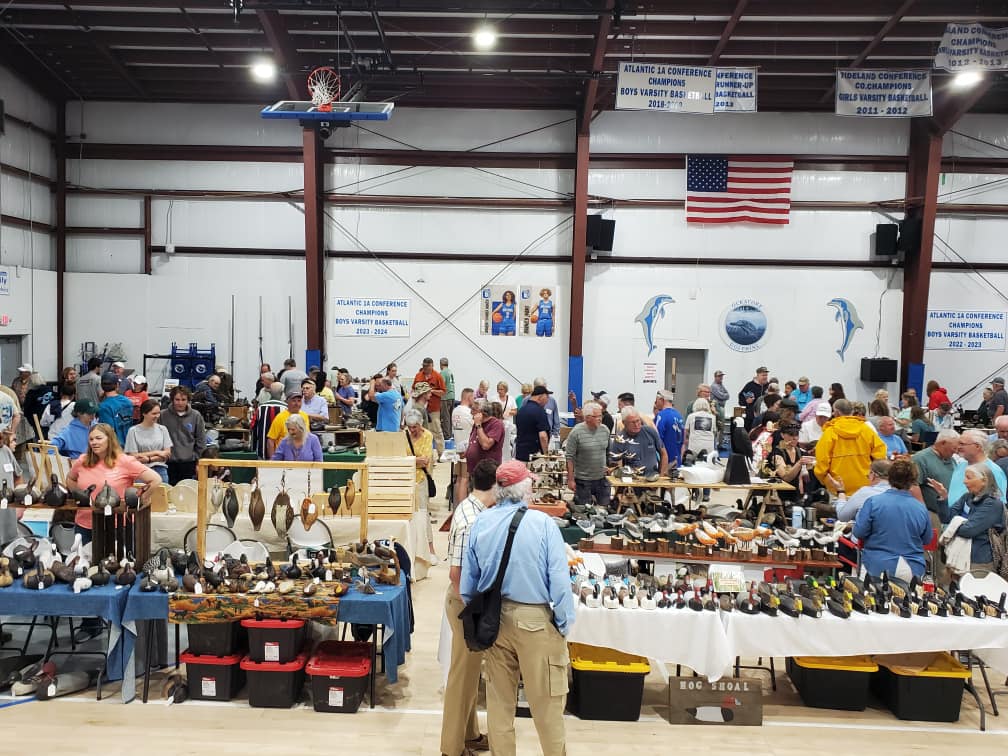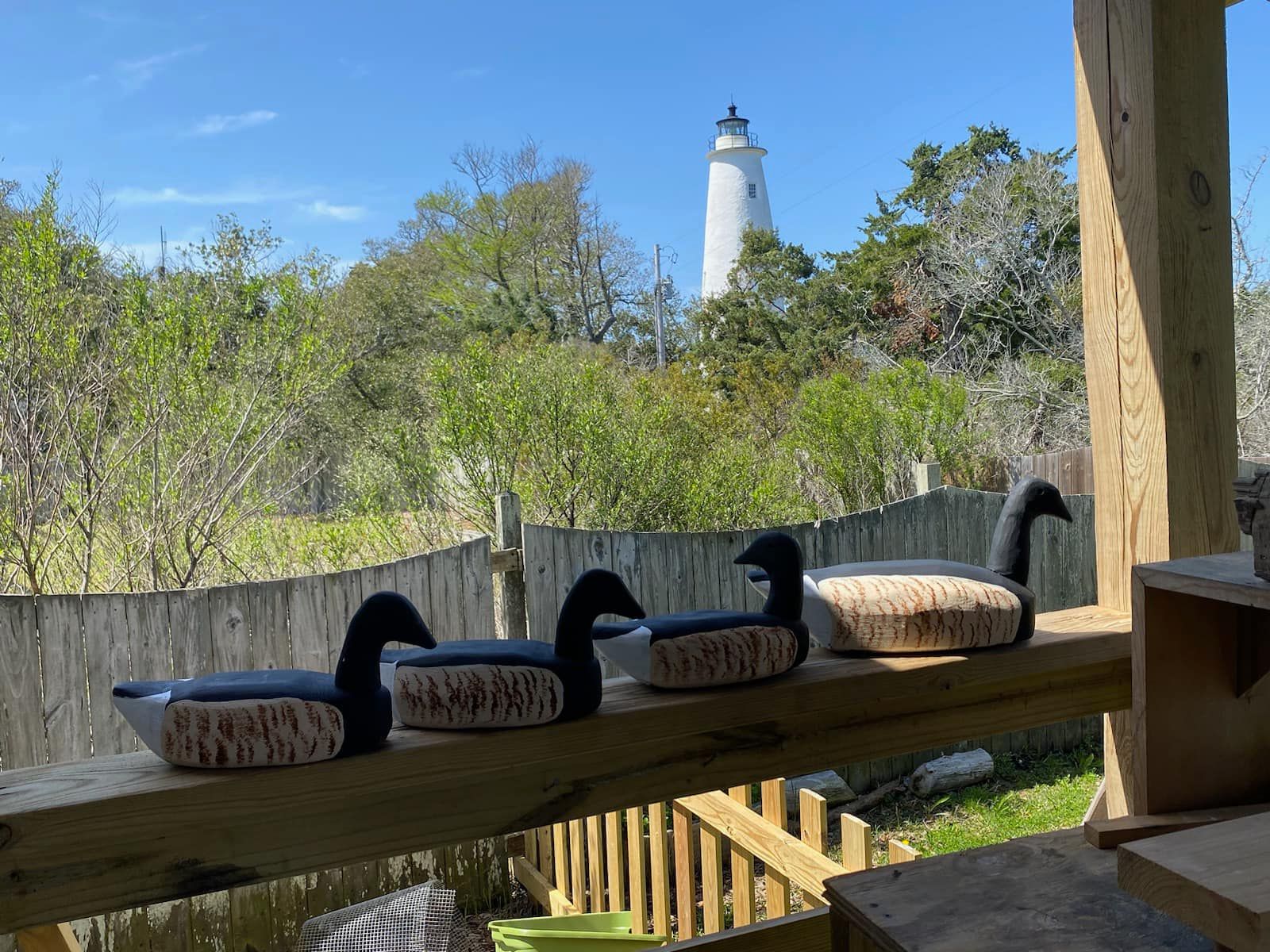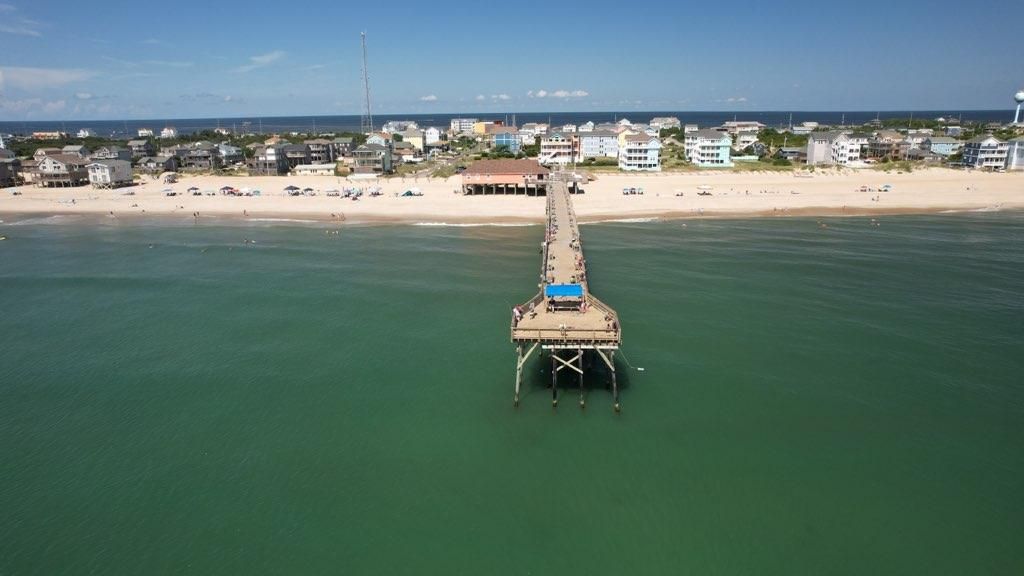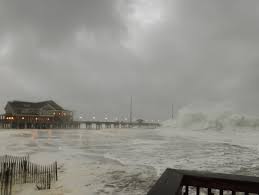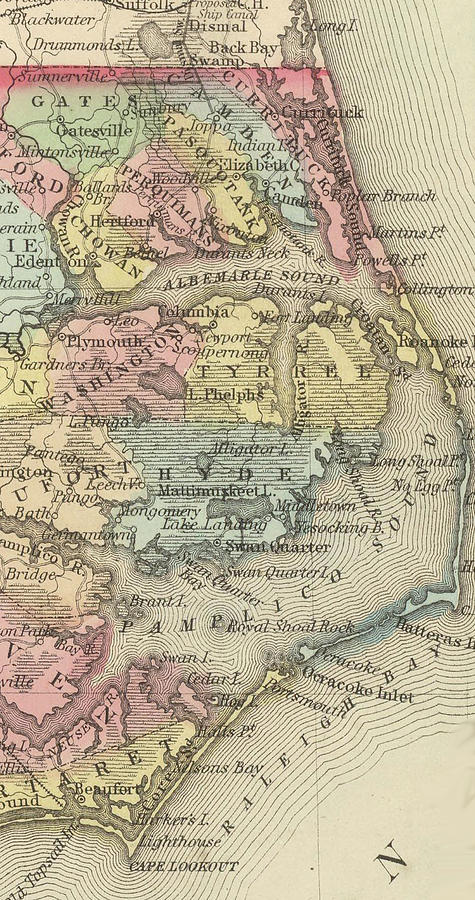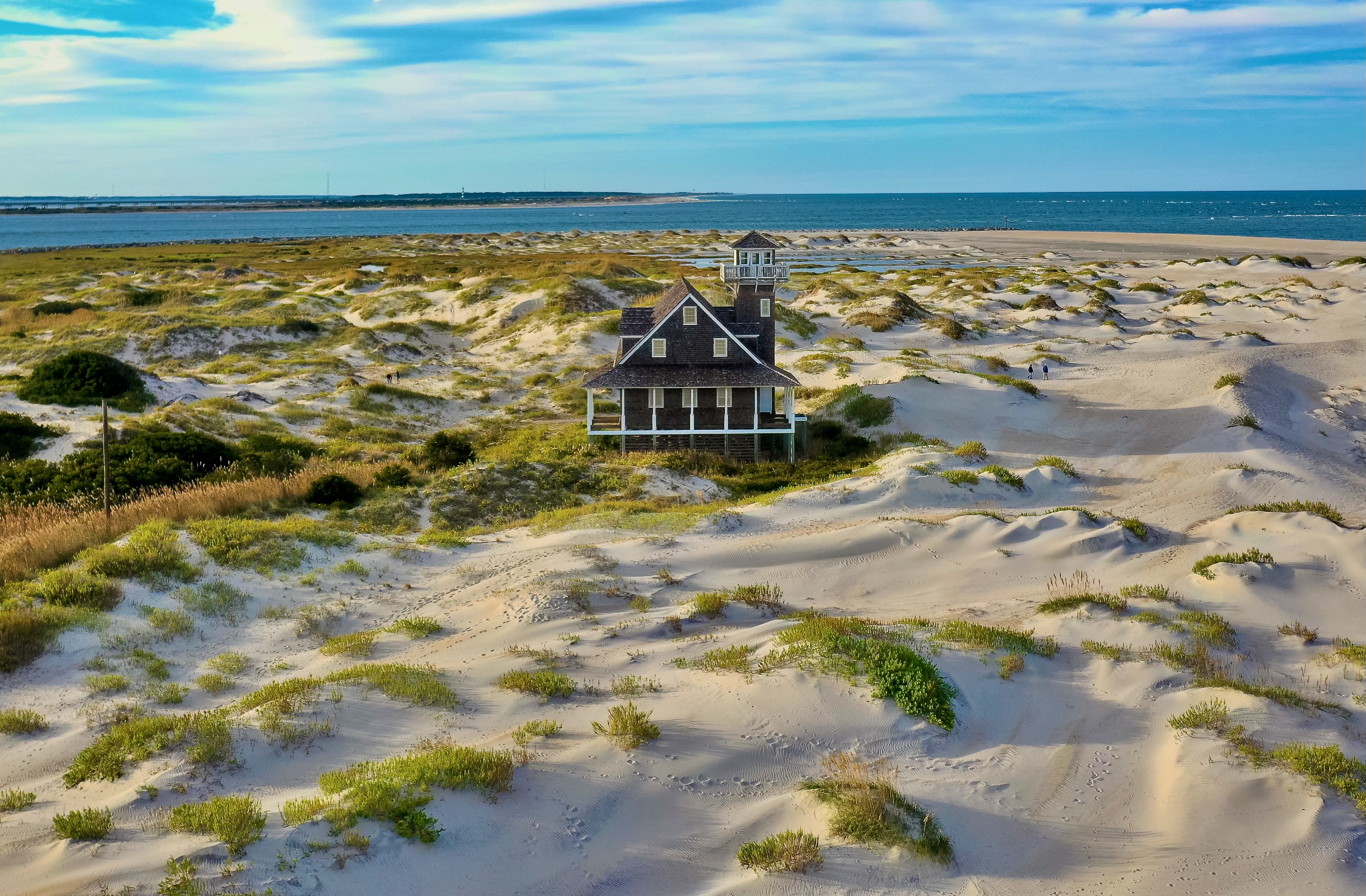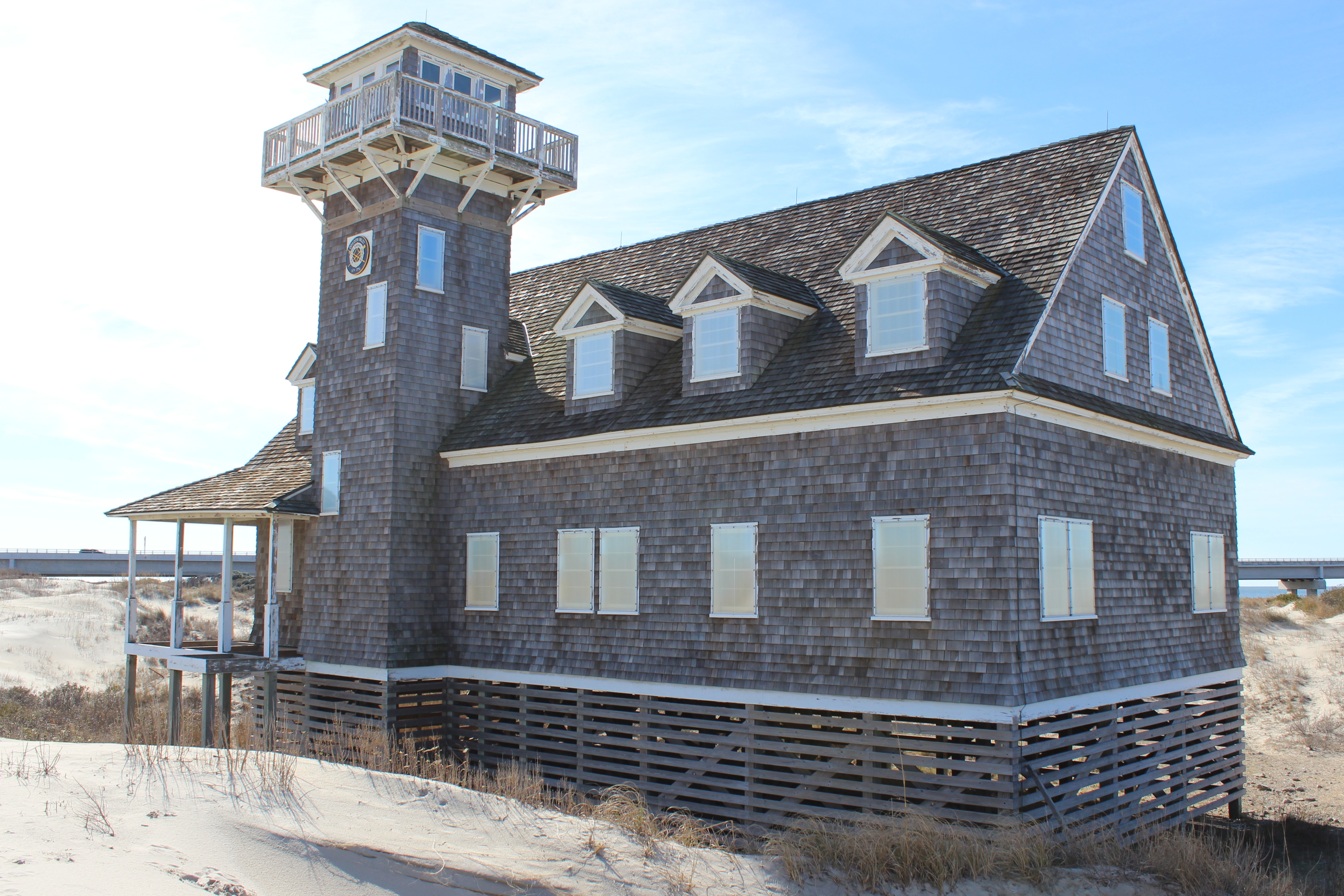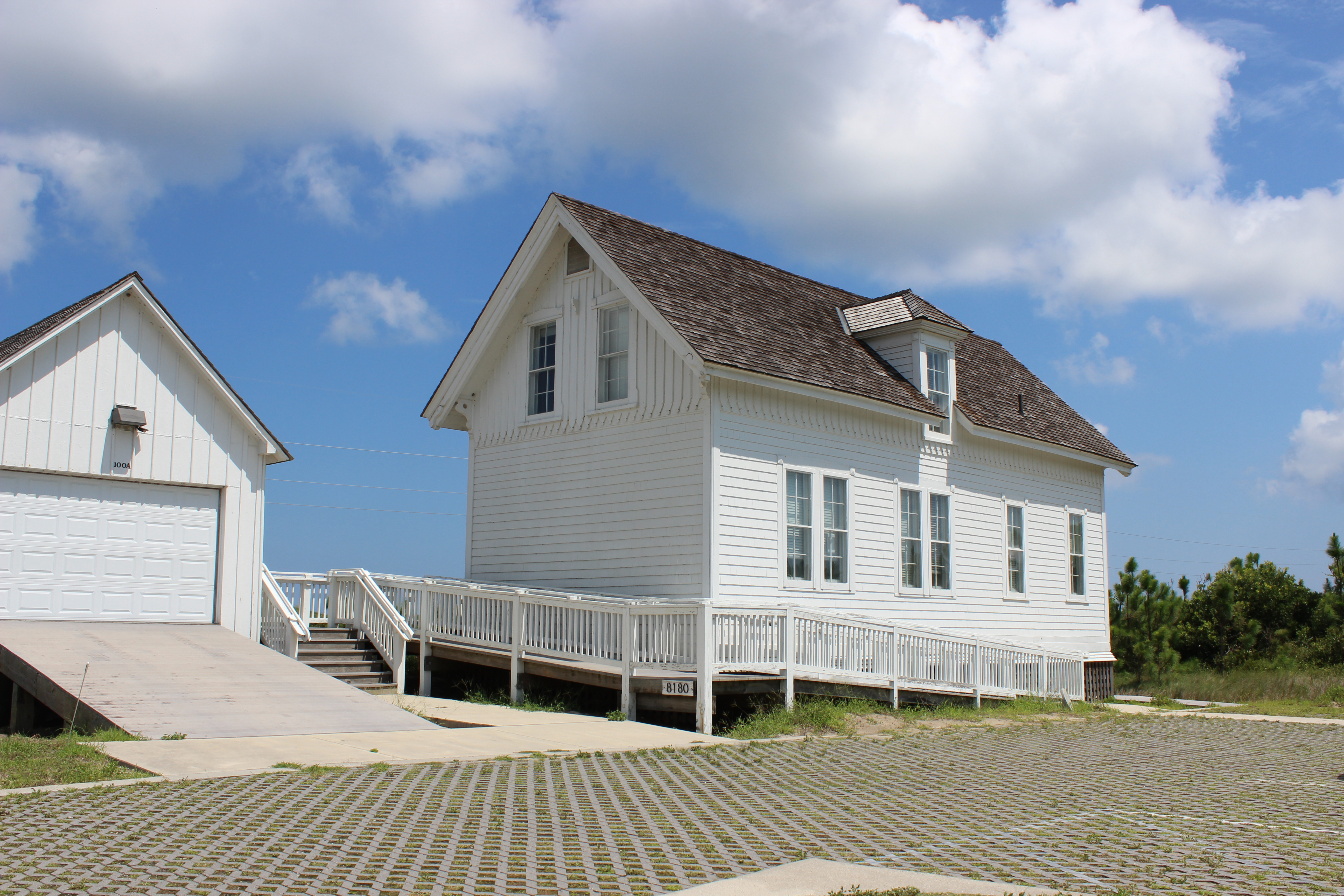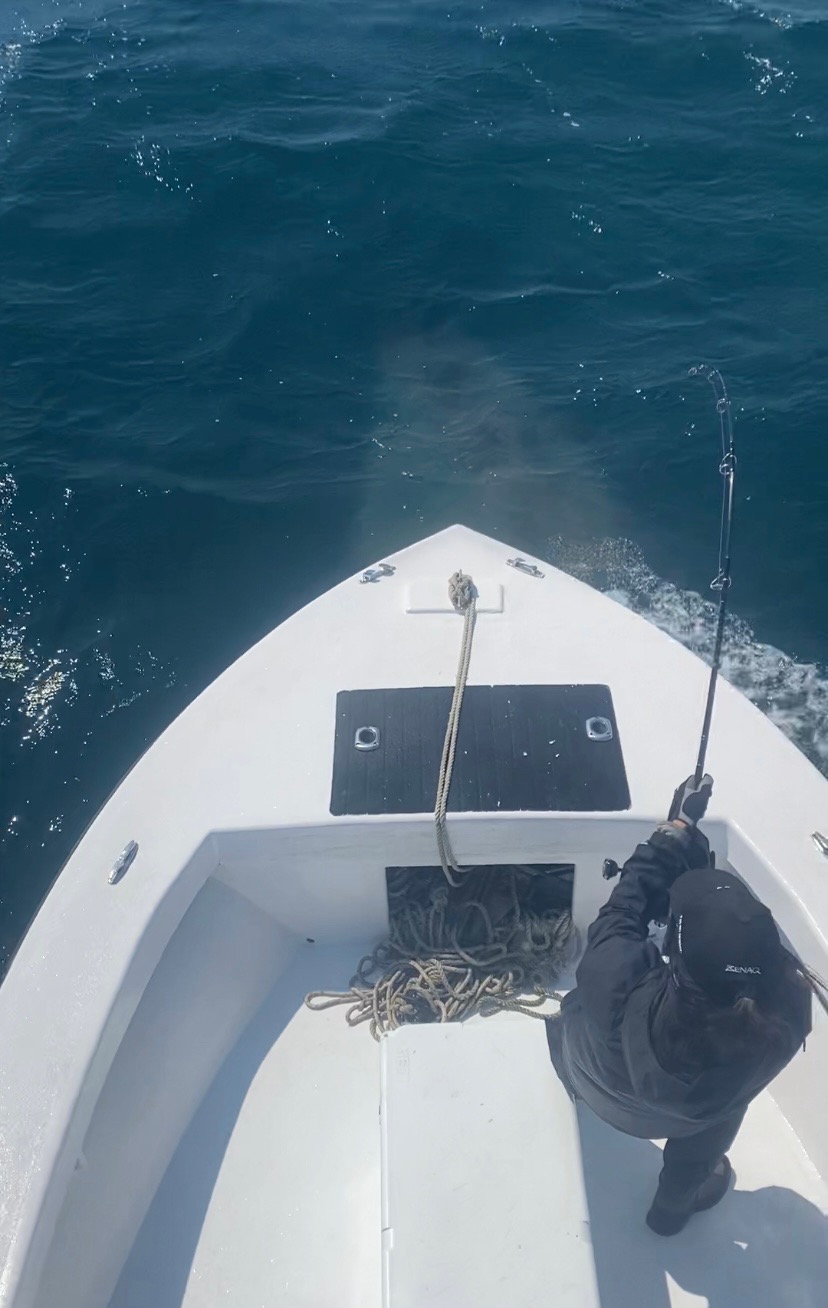Island History: A spotlight on stories from the Outer Banks’ Life-Saving Service
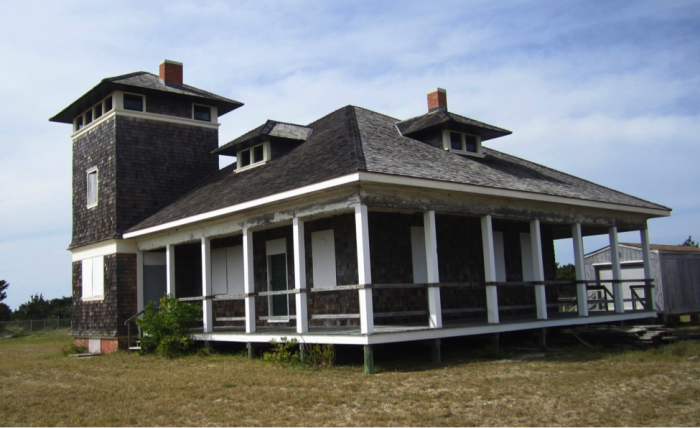
The Chicamacomico Life-Saving Station (CLSS) is celebrating its 150th anniversary this year, as one of the seven original Life-Saving Stations to be built in North Carolina in 1874.
As such, the Chicamacomico Life-Saving Station and Historic Site in Rodanthe will be sharing stories about the seven 1874 Outer Banks stations in the months ahead, leading up to the official October celebration of the United States Life-Saving Stations’ 150th anniversary in the state.
The following is the next of these Life-Saving Station feature articles to honor the #LegacyofLifeSaving, written by Jen Carlson for CLSS.
A Resilient Mindset – A heroic rescue by the crew of the Little Kinnakeet and Big Kinnakeet Life-Saving Stations
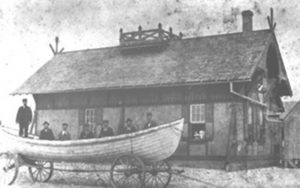
On October 5, 1881, a second schooner was driven to the shore by the weather near the Little Kinnakeet station just north of Avon.
The lifesaving crew had seen her heading to land while they assisted the crew of the Charles so they were already in the vicinity and were able to get to her as quickly as the weather permitted.
The beach conditions had deteriorated so they were traveling through knee-deep water through the gale-force winds. The schooner turned out to be the H. W. McColly with a five-man crew bound for Philadelphia with a load of pine lumber. This vessel had lost most of her sails and was leaking badly, so her experienced captain had scudded her along the shoreline for as long as possible before intentionally grounding her. He was familiar with the coastline and knew of the existence of the life-saving stations that stretched the shoreline, so he felt this was the best chance for his crew to survive the storm.
Unfortunately, when she beached, her stern lay to the sea so the water was breaking over her in a way that forced the crew to climb the riggings for safety.

Launching a beach apparatus or breeches bouy rescue, the wreck gun was quickly positioned by the Little Kinnakeet crew, and the first shot landed the shot-line that was secured by the men who had climbed the foreword rigging. They had difficulty with the whip-line due to the currents, but eventually got that tied off as well as the hawser.
By now, the crew from Station #21 (Big Kinnakeet) arrived to assist, and the crews worked together to haul off the breeches buoy.
During the setup of the beach apparatus, the vessel swung around with the stern now facing the beach, and the lines now entangled. Although the crews on shore gave the lines as much slack as possible to prevent them from snapping, the hawser did break, and the jerking motion caused a McColly mate to fall into the surf. He was quickly swept southward in the currents, but three crew members immediately donned cork life belts and went after him.
About 300 yards away from the stricken vessel, they entered the rough surf and were able to bring him safely to shore. Though the crew members offered to escort him to the station, the seaman refused to leave the scene of the wreck until his shipmates were also rescued.
The relentless waves had once again swung the McColly, and this time, the whip-line broke.
The Big Kinnakeet and Little Kinnakeet life-saving crews quickly hauled the lines out of the surf and, after untwisting the kinks in the lines, they waited for the opportunity to use the gun again.
The McColly shifted yet again, and the crews had their chance to send the lines back out to the vessel. This time, they also sent four life belts, but only three actually reached the vessel, with the fourth becoming entangled in the debris floating alongside the schooner.
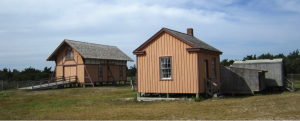
One seaman was in the process of using the line hand-over-hand to reach safety when the schooner swung around, and again caused the line to part. Somehow, he kept hold of the line during his fall and was pulled through the surf to safety.
A third shot was fired, but the vessel kept shifting locations, so it missed, but the fourth landed within reach of two of the remaining crew members.
They were able to tie it off, but almost immediately, the line broke. Yet again, the surfmen hauled back in the broken line and prepared for a fifth shot. The fifth line landed within reach of the seamen who were now so exhausted they were not able to haul out the whip-line. Realizing their need was critical, the two with cork life belts jumped overboard to attempt to swim to the beach. Gradually, the waves worked them towards the shoreline and they were at last in reach of the surfmen who had joined hands and waded out into the turbulent waters to reach them and bring them to safety.
Now, only the captain remained onboard, and he was the one without a life belt.
He had climbed a different rigging than the others, so he was waiting patiently for the life-saving crews to send help his way. Just as the crew was about to fire a line in his direction, with the intention of pulling him to shore, the mainmast broke and he was thrown into the water.
Quickly, he disengaged himself from the wreckage climbed the ship’s rail, and was able to reach the foremast which was still intact. As soon as he’d finished his climb, the sixth and final shot was made in an attempt to get a line to him.
Unfortunately, he lost his grip and fell into the water, and was quickly pulled underwater and out of sight. To the relief of those onshore, he re-emerged from underwater and was able to reach a large piece of debris to use as a flotation device.
Waves pushed him towards the shore where those on shore eagerly awaited the chance to pull him to safety.
Sometimes it’s one of your own that needs a hand.
During this historic rescue, one of the Little Kinnakeet surfmen had a near-fatal incident while going into the surf after one of the seamen. He was struck by a large piece of timber and was knocked unconscious, but thanks to the quick response of his teammates, he, too, was pulled to safety.
Between the Charles and the McColly, the Little Kinnakeet crew had an extremely long day, but their determined efforts are why we are celebrating the #LegacyofLifeSaving this year.
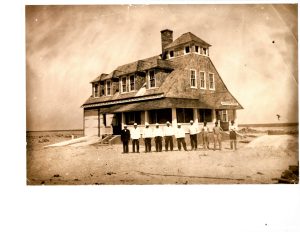
All in a Day’s Work at the Nags Head Life-Saving Station
Sometimes it’s all about disaster relief.
On August 25, 1918, a Category 1 hurricane hit the Outer Banks. The Nags Head Coast Guard station crew headed out into their community after the storm to assist where they were needed.
They ended up bringing eighteen women and children to the station whose homes had been washed away in the storm. They also spent some time recovering their furniture and clothing from the debris field.


